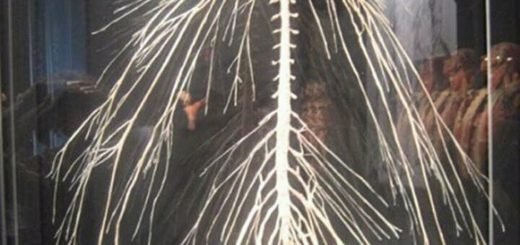9 Discoveries That Confirm The Bible
Imagine the excitement of brushing away the soil from some ancient stone or pottery shard and finding an inscription mentioning someone previously only known from scripture, and whose existence was questioned by Bible critics. Imagine what it would be like to unearth a building mentioned in the Gospels that Jesus and the disciples actually visited. Can you imagine discovering something which has been hidden for 2,000 years?
These things really happen! The evidence of archaeology really can help us interpret certain biblical texts, as well as providing an independent way to check the Bible’s historical reliability. Many critics of Christianity continue to argue against the trustworthiness of the New Testament record but, in fact, every new archaeological find has been on the side of scripture, not the skeptics.
What the late biblical archaeologist Nelson Glueck wrote in 1959 remains true: “It may be stated categorically that no archaeological discovery has ever controverted a biblical reference” and “scores of archaeological findings have been made which confirm in clear outline or exact detail historical statements in the Bible”. In the words of another archaeologist, Joseph Free, the field has “confirmed countless passages which had been rejected by critics as unhistorical or contrary to known facts”.
As with any witness, the more their testimony checks out where we can independently test it, the greater our general confidence in that source becomes. To illustrate the contribution archaeology makes to our confidence in the Bible, here’s a selection of finds relating to the New Testament.
Confirming Jesus’ life and death
1. Crucifixion victim
It has been speculated – especially by the skeptical scholar and author John Dominic Crossan – that the crucified corpse of Jesus would have been eaten by dogs, either as it hung on the cross or after it was buried in a shallow grave reserved for executed criminals. But a discovery in Giv’at ha-Mivtar, a Jewish neighborhood in north-east Jerusalem, proves that a victim of crucifixion could receive a proper, honorable Jewish burial. The story begins in 1968 when building contractors unexpectedly uncovered an ancient burial site containing about 35 bodies.
One tomb contained the bones of two generations of a family who lived in the century before the time of Jesus. One member of that family was Yehohanan, who was between 24 and 28 years old when he died. He had been crucified. His bones were discovered in an 18-inch long limestone ossuary (or bone-box), and a seven-inch nail had been driven through the heel bone of his left foot. Fragments of olive wood were found at the point of the nail, revealing the wood of the cross on which he died. To date, this is the only archaeological discovery from Roman times of a crucifixion victim. And it demonstrates that crucifixion victims were buried, just as the Gospel accounts suggest.
2. The Nazareth decree
An early story about the empty tomb of Jesus, circulated by the Jerusalem authorities, was that his body had been stolen. Matthew’s Gospel records: ‘When the chief priests had met with the elders and devised a plan, they gave the soldiers a large sum of money, telling them, “You are to say, ‘His disciples came during the night and stole him away while we 48 were asleep’”’ (Matthew 28:12-13). This story fits with the ‘Nazareth decree’ – an edict of the Roman Emperor which orders that anyone caught disturbing tombs or moving bodies from them should be put to death. It was reportedly discovered in Nazareth in 1878, and the emperor in question was Claudius, who ruled between AD 41 and 54.
The edict reads: “It is my decision [concerning] graves and tombs— whoever has made them for the religious observances of parents, or children, or household members – that these remain undisturbed forever. But if anyone legally charges that another person has destroyed, or has in any manner extracted those who have been buried, or has moved with wicked intent those who have been buried to other places, committing a crime against them, or has moved sepulchre-sealing stones, against such a person…I wish that [violator] to suffer capital punishment under the title of tomb-breaker.”
The Nazareth inscription can be read as a response by the emperor to the rumour that the disciples stole Christ’s body. Peter Walker, professor of Biblical Studies at Trinity School for Ministry in Pennsylvania, says: “Even if there is no conscious connection with Jesus of Nazareth, this decree still reveals that the imperial authorities in this period saw grave robbery as an extremely serious crime – indeed, as a capital offence. This only makes it yet more unlikely that the (already fearful) disciples would have risked such an act.”
3. The ‘Jesus’ boat’
Fishing boats feature frequently in the four Gospels and are part of some of the most famous stories from the life of Jesus. But how can we know that these important details about the local environment Jesus conducted his ministry in are a true reflection of the time?
In 1986, Israel suffered a drought, which caused the waters of the Sea of Galilee to recede, exposing large areas of the shallow seabed. Two local fishermen, who were also amateur archaeologists, discovered a boat buried in the mud, which turned out to be a well-preserved fishing boat from the time of Jesus. The design of the vessel – which measured over 27 feet in length – was typical of fishing boats used during the time of Jesus in the eastern Mediterranean. The boat was next to the village of Migdal, which in the first century was called Magdala, the home of Mary Magdalene.
Professor Shelley Wachsmann and other archaeologists raced against time to recover the boat from the mud before the waters returned. It was placed in a climate-controlled environment to protect it. Pots and lamps found beside the boat helped to date it to the first century, which was confirmed by radiocarbon dating of the wooden planks. In the back of the boat is a raised section, like that where Jesus was sleeping in the story of calming the storm. The boat could accommodate 15 people, so there would certainly have been room for Jesus and his twelve disciples in such a boat.
Confirming the places in the New Testament
4. The Pool of Siloam
In John 9 we read the story of Jesus healing a man who was born blind. Christ spits on the ground, makes some mud and puts it on the blind man’s eyes. He then instructs the blind man to wash in the Pool of Siloam. The blind man does so, and is healed. Critics of scripture often assume that John’s Gospel contains fictional accounts of Christ’s actions. But the existence of the pool of Siloam and the accuracy of the biblical account contradicts the view that such stories were later inventions.
In the third century AD, a church was built above a pool attached to Hezekiah’s water tunnel in Jerusalem to commemorate the healing of the blind man reported in John’s Gospel. Until recently, this was thought to be the Pool of Siloam. However, during sewerage works in 2004, engineers stumbled upon the steps of a first century ritual pool near the mouth of Hezekiah’s tunnel. By the summer of 2005, archaeologists said it was without doubt the missing pool of Siloam.
Mark D Roberts reports, “In the plaster of this pool were found coins that establish the date of the pool to the years before and after Jesus. There is little question that this is in fact the pool of Siloam, to which Jesus sent the blind man in John 9.”
5. Nazareth
Despite its fame today in the phrase ‘Jesus of Nazareth’, the town where Jesus was brought up was so insignificant in biblical times that it isn’t mentioned in any surviving literature until after the time of Jesus. Because of the lack of mention of Nazareth in the historical record, some critics have argued that the village didn’t exist until after the time of Jesus. That said, indirect mention of Nazareth is contained in Jewish sources from the end of the first century AD.
Archaeology has also added to this literary evidence. The evidence on the ground in Nazareth gives a good indication of the ancient date of the village. For example, archaeological digs in the vicinity of Nazareth have discovered tombs dating from the first century AD confirming the village was a strongly Jewish settlement. Then, in December 2009, archaeologists from the Israeli Antiquities Authority, excavating in the grounds of a former convent, unearthed a house from first century Nazareth. According to excavation director Yardenna Alexandre: “The discovery is of the utmost importance since it reveals for the very first time a house from the Jewish village of Nazareth and thereby sheds light on the way of life at the time of Jesus. The building that we found is small and modest and it is most likely typical of the dwellings in Nazareth in that period.”
6. Peter’s house in Capernaum
Capernaum contains the remains of a church from the fifth century AD which is octagonal in shape. In 1968, archaeologists discovered the remains of an earlier church underneath it. This had been built around what was originally a private house, which was apparently used by Christians as a meeting-place during the second half of the first century. Today a modern church exists, suspended above the site, with the excavation site visible through a glass floor.
Peter Walker, professor of Biblical Studies at Trinity School for Ministry, says: “Graffiti that referred to Jesus as Lord and Messiah…provides strong evidence that the room was used as a place of Christian worship – almost certainly because it was believed to be the room used by Jesus, perhaps the home of Simon Peter (Luke 4:38)… Given that the early tradition goes back to the first century, this is almost certainly the very place where Jesus stayed – the home of his chief apostle, Peter.”
Confirming the people in the New Testament
7. The Pontius Pilate stone
In 1961, an inscription was found which confirms not only the rule of Pilate in Judea but also his preference for the title ‘Prefect’. In Latin, the inscription (dated to c AD 26-37) reads:
TIBERIEUM
IUS PILATUS
ECTUS IUDA The original wording was:
TIBERIUM
[PONTIUS] PILATUS
[PRAEF]ECTUS IDU[AEA]
Translated, this reads: “To Tiberius – Pontius Pilate, Prefect of Judea.”
8. The ‘James, son of Joseph, brother of Jesus’ ossuary
James the brother of Jesus was martyred in AD 62. A mid first century AD chalk ossuary discovered in 2002 bears this inscription: “James, son of Joseph, brother of Jesus” (“Ya’akov bar Yosef akhui di Yeshua”)
The ossuary has provoked controversy as the inscription was originally suspected of being a forgery. However, two eminent paleographers confirmed it authentic in 2012. New Testament scholar Ben Witherington states: “If, as seems probable, the ossuary found in the vicinity of Jerusalem and dated to about AD 63 is indeed the burial box of James, the brother of Jesus, this inscription is the most important extra-biblical evidence of its kind.”
9. The empty shroud
The intensively studied ‘Shroud of Turin’ – which bears a superficial, photographically negative image of a flogged and crucified man (an image that also contains three-dimensional information) – was formerly dismissed by many on the basis of 1988 carbon dating tests giving a medieval date.
However, recent peer-reviewed scientific findings show that this dating was unreliable because the samples dated were all taken from the same medieval patch. Moreover, a mass of historical and forensic evidence points towards an earlier and even first century date for the Shroud. For example, forensic evidence ties the Shroud to a bloody head cloth known as the ‘Sudarium of Oviedo’, an artifact with a provenance that can be traced back as far as the seventh century.
Radiocarbon dating tests conducted in early 2013 by Padua University scientists established that the Shroud was likely made somewhere between 280 BC and AD 220.
A statistical comparison between data from the shroud and the New Testament’s description of various irregular details of Jesus’ punishment establishes that if the Shroud is indeed a genuine first century artifact then it probably was Jesus’ actual burial cloth. Hence the Shroud provides archaeological evidence for the Gospel accounts of Jesus’ flogging, crown of thorns and crucifixion, as well as for the claim that Jesus was given an honorable burial. Moreover, that the Shroud no longer contains a body and bears undisturbed blood clots provides additional evidence in the case for Jesus’ resurrection.
We can speak with certainty about events throughout history because of the archaeological evidence we find. Historians write with authority about the rise and fall of empires and the practices of monarchs and rulers. They are able to do the same when it comes to the Gospel accounts of the life of Jesus. Critics sometimes argue there’s no evidence for Gospel narrative, but archaeology says otherwise. Archaeology gives us independent evidence for cultural practices, beliefs, places and people mentioned in the New Testament. This evidence confirms the historical character and reliability of the Gospel texts.




















